El papel de la genética en la elaboración artesanal de flores de THCA: ¿Por qué importan las cepas?
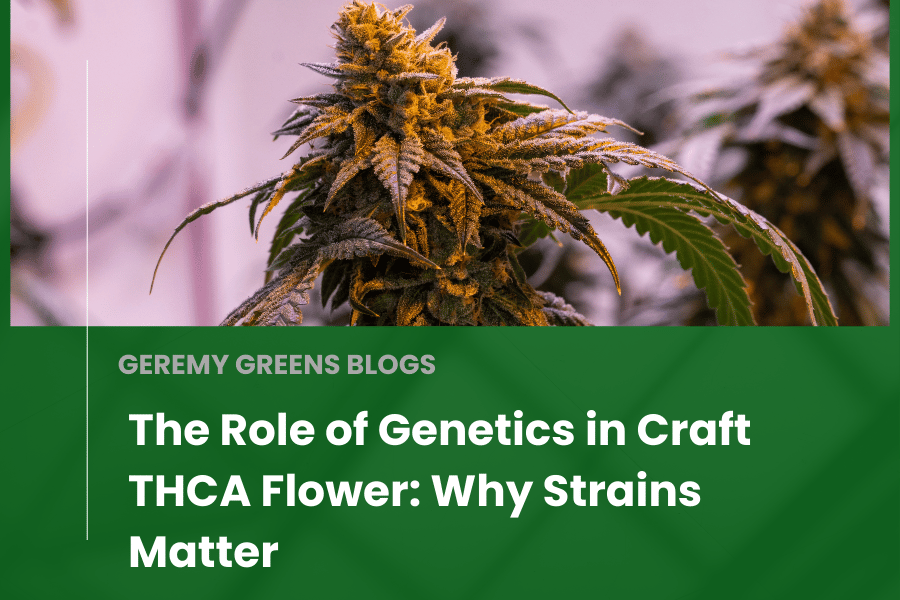
Cuando se trata de flores premium con THCA, uno de los factores más ignorados, pero también cruciales, es la genética . Puedes tener el mejor suelo, la mejor iluminación y el mejor proceso de curado del mundo, pero si la base genética de tu cepa es débil, el producto final nunca alcanzará la máxima calidad.
Para los cultivadores artesanales, la genética no es solo un punto de partida, sino un modelo a seguir. Para los consumidores, conocer el linaje de una cepa puede revelar mucho sobre lo que están a punto de fumar: sus efectos, sabor, aroma e incluso la calidad de la combustión.
Profundicemos en por qué importa la genética y cómo la selección inteligente de cepas define el futuro del movimiento de flores artesanales con THCA.
1. ¿Qué es la genética del cannabis?
La genética del cannabis se refiere a la composición específica del ADN de una planta, determinada por su cepa y fenotipo. Al igual que en animales y humanos, la genética lo rige todo, desde:
-
Tasa de crecimiento y estructura
-
Resistencia al moho, plagas o estrés.
-
Producción de cannabinoides (THCA, CBD, etc.)
-
Perfiles de terpenos
-
Densidad y coloración de los tricomas
Dos plantas cultivadas en condiciones idénticas pueden resultar muy diferentes basándose únicamente en la genética.
2. ¿Herencia, híbrido o moda pasajera?
La mayoría de las flores de THCA que se encuentran en los estantes hoy en día provienen de genéticas híbridas: mezclas de linajes sativa e índica diseñadas para maximizar ciertas características.
Tipos de orígenes genéticos:
-
Cepas tradicionales: estilo landrace, conservadas en su forma genética original (por ejemplo, afgana, tailandesa, malawi)
-
Híbridos modernos: criados por su potencia y rendimiento (por ejemplo, Gelato, Wedding Cake, Blue Dream)
-
Cepas de diseño: Cultivares boutique a menudo creados por su sabor, estética o por sus características exclusivas (por ejemplo, RS11, Zkittlez, Runtz)
Para los cultivadores artesanales, seleccionar o cultivar una genética estable es lo que separa las flores de alta calidad de los cogollos mediocres.
3. Terpenos: la firma genética del sabor
Los terpenos son los compuestos aromáticos que le dan al cannabis su olor y sabor. La genética de una cepa determina qué terpenos producirá y en qué concentraciones.
Ejemplos de perfiles de terpenos por cepa:
-
Limoneno: se encuentra en cepas como Super Lemon Haze y aporta un aroma cítrico y estimulante.
-
Mirceno: común en Bubba Kush, añade efectos terrosos y sedantes.
-
Cariofileno: presente en el GSC, ofrece un toque picante y propiedades antiinflamatorias.
La flor artesanal no solo se trata de altos niveles de THC, se trata de una expresión de terpenos equilibrada y sabrosa vinculada a una genética bien criada.
4. Tricomas: Donde la genética se encuentra con la calidad de la resina
Los cristales escarchados de la flor, llamados tricomas, son responsables de la producción de THCA. La genética determina cuántos tricomas se forman, su tamaño y la cantidad de cannabinoide que producen.
Rasgos de los tricomas según la genética:
-
Densidad: Qué tan cubierto se ve el cogollo
-
Tamaño y forma: Algunas cepas producen grandes tricomas bulbosos, otras resina más fina.
-
Color: Tricomas ámbar, transparentes o lechosos según la genética y el momento de la cosecha.
Tricomas de alta calidad = flores más fuertes y todo comienza en el ADN.
5. Estabilidad y consistencia: por qué son importantes en la producción artesanal
Si eres un cultivador artesanal o compras flores de alta calidad, la estabilidad genética es importante.
-
Las cepas inestables pueden proliferar (producir semillas) o cambiar de fenotipo a mitad de crecimiento.
-
Los cortes mal realizados pueden producir resultados inconsistentes de un lote a otro.
-
Las marcas artesanales con cepas genéticas confiables generan confianza en el consumidor a lo largo del tiempo.
La estabilidad de la cepa también hace que sea más fácil mantener los COA específicos del lote , ya que los rangos de cannabinoides y terpenos se mantienen predecibles.
6. Cultivando el futuro: Genética texana para el terroir texano
A medida que Texas emerge como un nuevo centro para las flores de THCA, los criadores están comenzando a desarrollar cepas adecuadas para el suelo, los ciclos solares y la humedad de Texas.
Buscar:
-
Genética desarrollada para resistir altas temperaturas y sequías
-
Perfiles de terpenos adecuados para el gusto regional (piense en: terroso, cítrico, diésel)
-
Cultivares personalizados de granjas de Texas como Geremy Greens , creando cepas desde la semilla hasta el estante
A largo plazo, la genética local definirá la identidad regional de las flores artesanales de Texas, al igual que las uvas de vino en Napa o los granos de café en Colombia.
7. Cómo comprar calidad genética
Ya sea que compres flores de THCA o las cultives tú mismo, esto es lo que debes buscar:
-
Linaje de la cepa indicado en la etiqueta
-
Descomposición de terpenos probada en laboratorio
-
Transparencia de la explotación o del criador
-
Inspección visual de tricomas (escarchados, pegajosos, densos = buenas señales)
Evitar:
-
Nombres de cepas vagos sin origen
-
Flor producida en masa con variación cero en el lote
-
Cogollos esponjosos con poco aroma o tricomas visibles.
Conclusión: La genética es el alma de la flor artesanal
No se puede falsificar una flor excelente. Todo lo relacionado con el THCA de primera calidad, desde su cultivo hasta su sabor, parte de una genética sólida. A medida que el mercado del cannabis artesanal madura, se espera un mayor enfoque en la identidad de las variedades , la innovación en el cultivo y el desarrollo de cultivares locales .
En Geremy Greens , trabajamos con criadores y agricultores que respetan el linaje genético de cada planta, porque ahí es donde comienza la verdadera calidad.
Ya sea que sea un cultivador, un dispensario o un entusiasta, comprender la genética es clave para hacer crecer el futuro del cannabis en Texas y más allá.
Sin comentarios

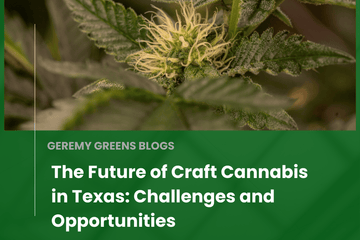
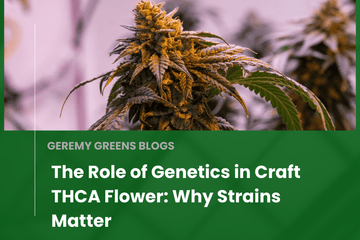

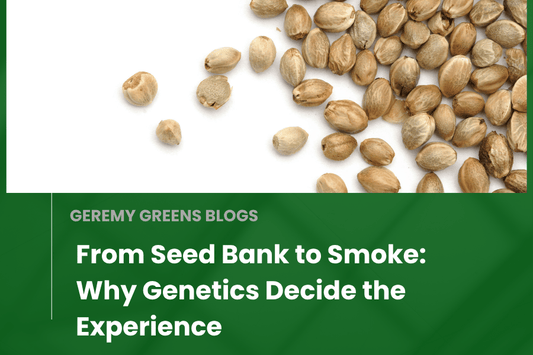
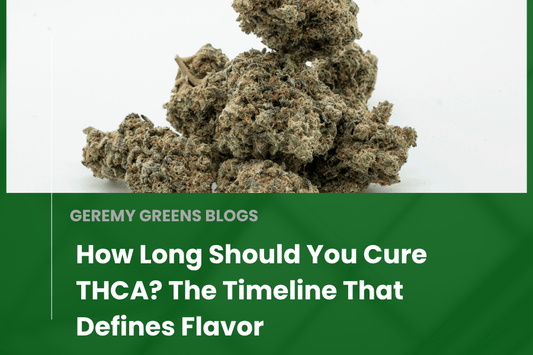



0 comentarios